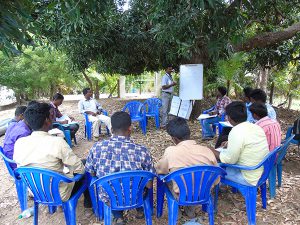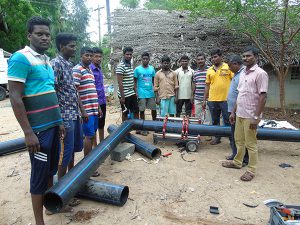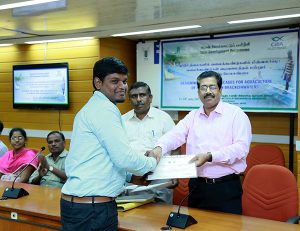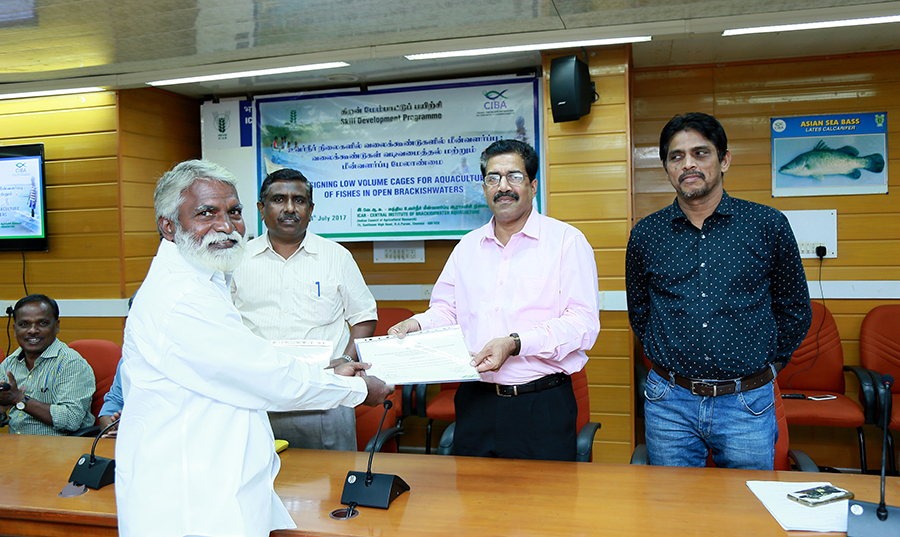Brackishwater creeks and estuaries can be efficiently utilized by installing suitable cages for farming of fishes which is the prudent strategy for doubling fish farmers’ income and augmenting fish production. To achieve that the art and science of crafting low volume cages suitable for brackishwaters and farming techniques of fishes need to be inculcated to the coastal fisher families and other interested farmers and entrepreneurs. The ICAR-Central Institute of Brackishwater Aquaculture (ICAR-CIBA) has conducted a skill development programme for the fisher youths and aquaculture graduates on “Crafting low volume cages and farming of brackishwater fishes in cages” during 11-14th July, 2017. Resource persons from the National Institute of Ocean Technology (NIOT), Govt. of India, Chennai who are pioneer in sea cage farming were invited to provide hands-on training on cage fabrication and deployment in brackishwaters at Vennangupattu village, Kancheepuram district, Tamil Nadu where ICAR-CIBA is demonstrating cage farming of fin fishes in brackishwaters. The skills of cage designing, material sourcing, nets making, fabrication and positioning of cages at an appropriate location were inculcated adopting ‘seeing is believing’ and ‘learning by doing’ methods. Site selection criteria for cage farming in brackishwater open waters viz., water depth, water flow, water quality parameters, continuous water availability, climatic and natural extreme events profile of the site and socio-cultural factors of the communities were taught to the trainees. The brackishwater fish species suitable for cage farming, seed availability, optimum seed size, seed transportation, acclimatization, stocking density for different cages and sampling procedures were demonstrated to the trainees.
Further, fish health monitoring aspects, disease preventive measures and fish health monitoring protocols were taught. The trainees were trained to calculate the economics of cage farming, economic viability of different cage farming systems, preparation of bankable projects on cage farming in brackishwaters and presented their model projects. Social harmony with the local communities is the key for the viability and success of cage farming in brackishwaters, therefore, skills on community handling were imparted using role-play techniques. Mobilising fisher families who have access and traditional right on the brackishwater resource is the better-fit model for cage farming and an interaction session was arranged with the members of A.P.J.Abdulkalam Fish Producers Group, Vennangupattu village who are presently doing cage farming in brackishwaters with ICAR-CIBA and NIOT support. Nineteen trainees participated in the training and certificates were distributed as proof of the skill imparted. The trainees felt that the training was all-inclusive, totally practical and provided them the skill required for taking up cage farming in backwaters.



